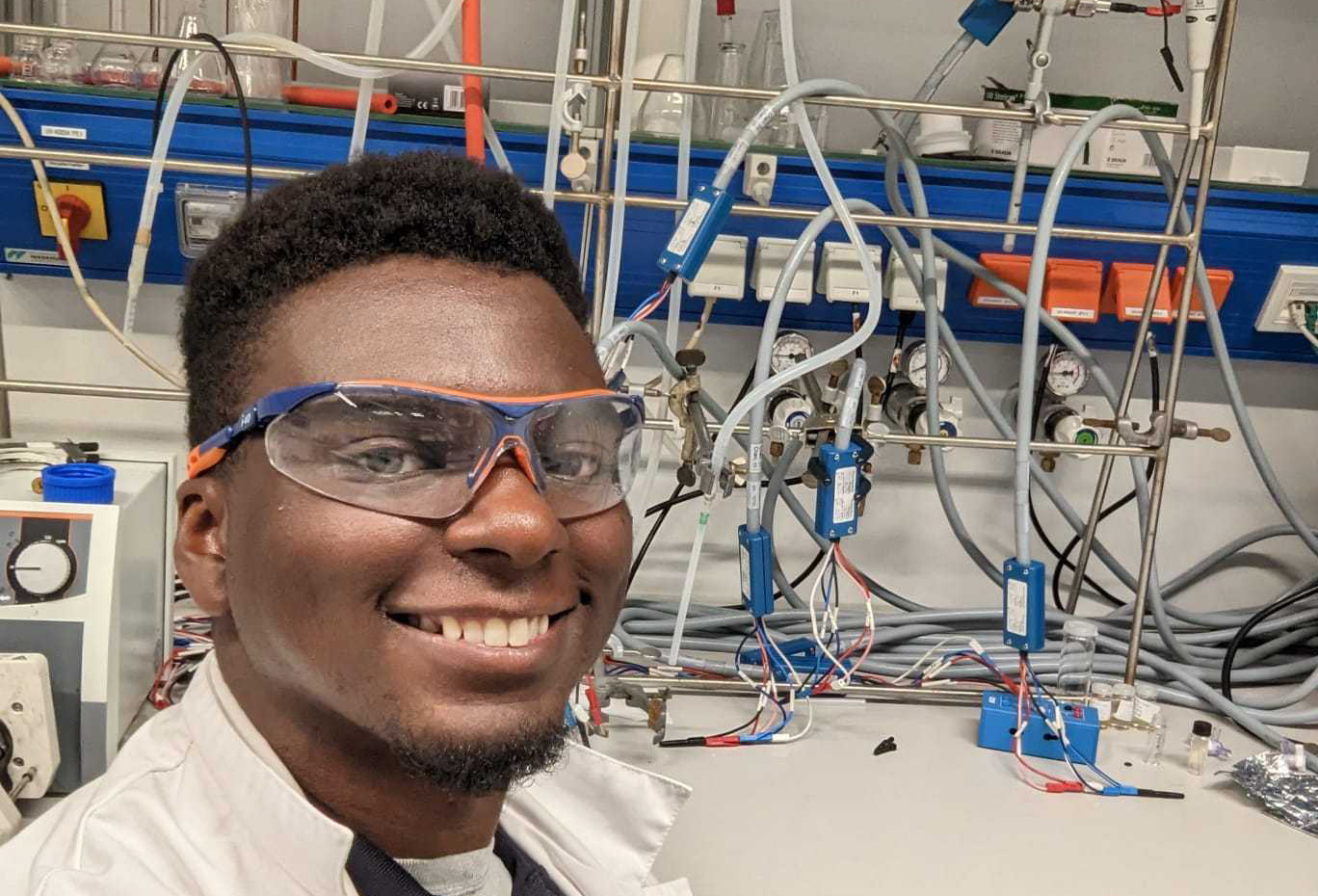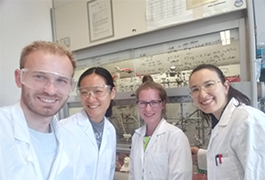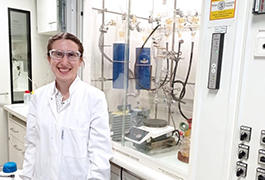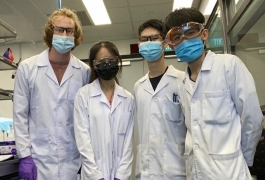Five Key Questions for Safe Research and Demos
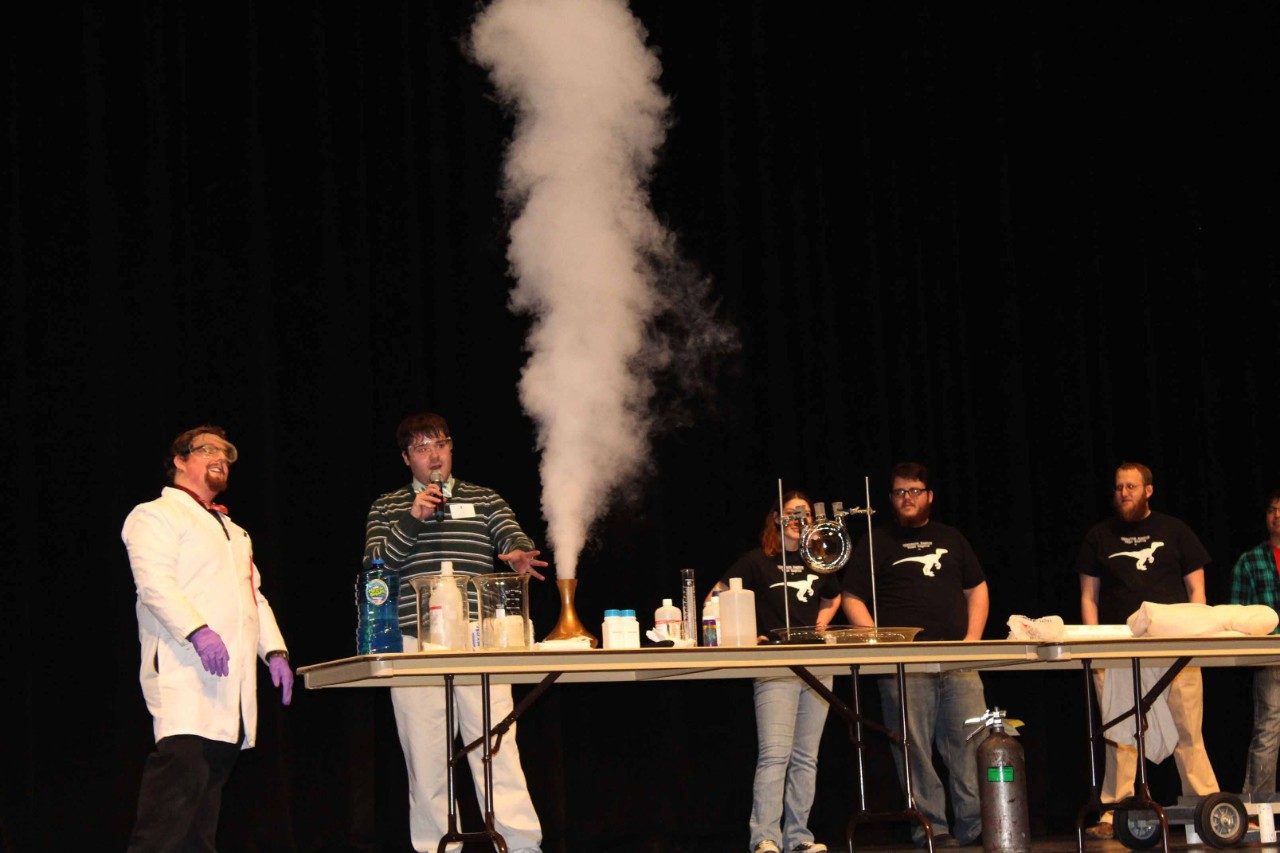
After you have taken a couple of chemistry classes, it might seem that the safety rules you reviewed on the first day (“Wear your goggles”, “Use the hood when you need to”) told you everything you need to know about working safely with chemicals.
When you start working with chemicals on your own — whether in a research lab or in a chemistry demonstration before an audience — the safety situation changes. In teaching labs, someone has already identified the hazards and lowered the risks as much as practical prior to your arrival. But research work requires that you explore new ideas and deviate from established experiments, which can introduce new hazards.
Meanwhile, chemistry demonstrations can take place outside the controlled environment of the lab, which can expose both you and your audience members to a variety of new risks.
Both ethics and self-preservation require you to consciously consider what unexpected results might arise in either situation (see The Chemical Professional’s Code of Conduct).
There are legal implications, too. Many states adhere to the National Fire Protection Association’s recommendation that educators conduct documented risk assessments prior to demonstrations or when students are using hazardous materials in laboratories.
Learning to assess and address risk is vital to your academic and professional career.
The following five questions will help you develop your risk assessment skills and increase your understanding of chemical hazards. You should always document your answers to these questions in writing so that you can explain them to others as the need arises.
1. What specific chemical or physical reactivity hazards are associated with the way I’m using these chemicals?
Risk assessment starts with finding reliable information about your chemicals (see Recommended Websites for Researching Chemical Safety Data on page 8), but you should also consider how you are using them. Sometimes simple substitutions of the chemicals in a process or changing the amount or concentration of the chemicals being used can create a different risk scenario.
Explosions at the University of Minnesota and Texas Tech University are evidence of the hazards associated with even small changes in the chemistry being studied.2, 3 Safety Data Sheets (SDSs) don’t always provide specific information about these changes because manufacturers of chemicals can’t predict all the ways researchers will use them. Remember that the phrases “Not Available” and “No Information” do not mean “Safe.” Consulting information resources beyond the SDS is important any time you (1) change the chemical or process you’re using, (2) increase the concentration of the chemicals you’re using, or (3) increase the quantities of the chemicals you’re using by a factor of 3 or more.
For physical hazards associated with chemicals, be particularly mindful of chemicals that have a signal word “Danger” with the Globally Harmonized System of Classification and Labelling of Chemicals (GHS) icon of an exploding bomb, oxidizer, or corrosive. For health hazards, be particularly mindful of the skull and crossbones and health hazard icons. If chemicals with these warnings are important to your experiment, be sure to take protective measures, such as using only small quantities and carefully controlling what the chemicals come into contact with.
2. What type of ventilation do I need?
In the laboratory, both fume hoods and general room ventilation rely on dilution to control the potentially hazardous vapors from chemicals. If there are likely to be significant emissions of chemicals that you don’t want to breathe, you need a fume hood. Remember that fume hoods have to be used correctly to contain vapors and are not meant to control fires, explosions, or particles.4
So which chemicals don’t you want to breathe? For help in making this determination, consult the SDS to identify toxicity levels and odor thresholds of the chemicals. Look for the phrase “well-ventilated space” in the SDS precautionary statements. Seek advice from your advisor or chemical hygiene officer if you do not know how the data you find apply to ventilation requirements.
3. What personal protective equipment do I need?
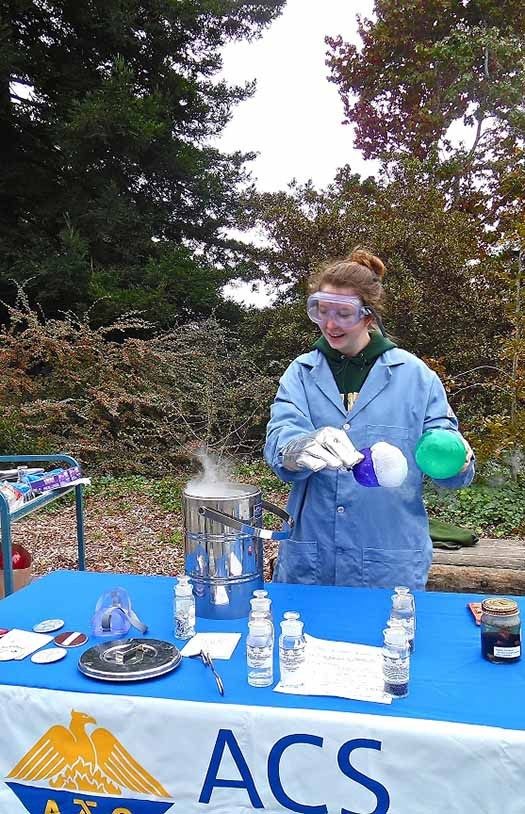
This is probably the most complicated of the safety questions. First, you must decide what personal protective equipment (PPE) is required for the chemicals and the processes you are using. Your specific PPE needs will depend on how the work is being done.
Consider the following when choosing PPE:
Fit. Take the time to find the right size protective equipment for you. If your audience members will need PPE, be sure to have a variety of sizes. Changing the brand may provide a fit.
Gloves. The width of your hand across your knuckles, in inches, is your approximate glove size. Gloves should be tight enough to move with you and keep out hazards, but they should not be so tight that they tear easily or weaken the material.
Eyewear: Goggles should provide a complete, snug seal around the eyes and the bridge of your nose. If they are too loose, hazardous liquids could splash in. If they are too tight, they may fog.
If you wear eyeglasses, look for goggles sold as “OTG” (over the glasses).
Lab coat. A lab coat should cover from your arms to your wrist and fall past your knees. It should be just large enough to cover your torso when fastened without gapping or restricting movement. Loose sleeves can create a spill hazard; rolled-up sleeves can trap chemicals. A lab coat that is too large can trip you, become caught on equipment, or leave your neck area open for spills.
Type. Generally, if there is a possibility of a chemical splash of more than 100 mL, then you need chemical splash goggles with indirect venting. If you are using instrumentation or doing computer work in the lab, safety glasses may suffice.
Material. Chemicals can permeate all glove materials, eventually. The “permeation time” can help you decide which material is best for your chemicals. If you cannot find a specific material for your chemical, it may make sense to wear two pairs of gloves and replace the outer gloves whenever they show signs of contamination or tears. Likewise, when working with flammable solvents or demos that involve fire, you need a flame-resistant coat that provides coverage to, at least, the knees. A rubber apron might be needed if you are working with larger quantities of corrosive liquids.
4. What emergency response protocols will be needed if something goes wrong?
Chemistry laboratories will have spill kits, fire extinguishers, eyewashes, and safety showers available — but do you know how to use them? An emergency is not the time to figure out how they work, so ask your faculty advisor for a chance to try them before you need them.
Working with certain chemicals requires special planning in case of a spill or exposure. Some chemicals can penetrate the skin’s surface and impact other organs of the body, such as the kidneys, heart, and nervous system. Deaths have resulted when lab workers spilled very hazardous chemicals on their skin and lacked the proper first-aid resources to treat the exposure. Look for the phrase “Specific Target Organ Toxicity” on the SDS for any chemical marked with the GHS skull and crossbones icon to identify chemicals with this potential. Whenever using such chemicals, special training, adequate ventilation, and the correct PPE are imperative for safe use.
5. What will I do with the waste?
Laboratory work can generate many different kinds of wastes. Some of the most common among them are chemicals, sharps, biological wastes, and radioactive wastes. For practical and legal reasons, these cannot be disposed of in the sink, trash, or recycling system. Very little information on this topic will be present on SDSs because laboratory wastes are regulated differently from location to location. For this reason, your institution will have its own system to ensure the safe collection and disposal of hazardous wastes. Labeling of waste is strictly regulated by the Environmental Protection Agency, so it’s important that you understand your institution’s requirements. Be sure to know which protocols apply to any waste materials you will generate before you start work. The mixing of incompatible materials in waste containers is very dangerous and can result in the container rupturing. As with an emergency, you don’t want to be thinking “Where does this go now?” or “Can I mix these?” after you have already generated the waste.
After taking a couple of chemistry courses, you are probably feeling pretty safe around chemicals; however, recent fires, explosions, and other incidents should remind you that even familiar materials can become dangerous if you are not prepared. Fortunately, learning to ask and answer the questions listed above before proceeding with laboratory work or chemical demonstrations during your undergraduate years will advance your thinking about safety from merely following rules to managing risk. This good habit will be a powerful advantage as you make the transition from a student in teaching labs to a chemist in research and demonstration settings.
Risk Assessment in the Workplace
In industry, “risk assessment” is the process of identifying, evaluating, and mitigating hazards. A grid similar to the one shown below is typically used to estimate risks. The impact of something going wrong (organized in columns) is combined with the likelihood of it happening (in rows), and a relative risk level is assigned accordingly. For example, if someone is dissolving sodium chloride in boiling water using a stirring rod, an accidental splash is somewhat likely. A boiling- water splash will probably burn (recognized hazard), so this procedure comes with a moderate risk.
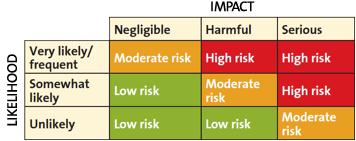
In the workplace, low-risk procedures are preferred. The aforementioned procedure could be made less risky by modifying it to use a stir plate or room-temperature water, for example. Moderate- risk activities are considered carefully, with emergency plans in place ahead of time. High-risk procedures are rarely, if ever, approved because they do not meet legal or code requirements without expensive engineering precautions.
REFERENCES
1 NFPA 45: Standard on Fire Protection for Laboratories Using Chemicals, Chapter 12. (accessed July 11, 2016).
2 Kemsley, J. Details on the University of Minnesota explosion and response. The SafetyZone blog, C&EN. (accessed July 11, 2016).
3 Texas Tech University Laboratory Explosion, Case Study No. 2010-05-I-TX. U.S. Chemical Safety and Hazard Investigation Board (accessed July 11, 2016).
4 Chemical Fume Hood Use Guidelines, Environment, Health & Safety, UC San Diego. (accessed July 11, 2016).



